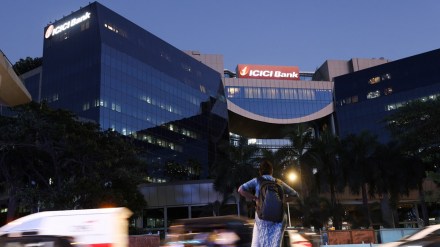After about 15 years, ICICI Bank has become more valuable than HDFC Bank. As on January 21, the HDFC Bank stock commanded a price/book value (P/BV) multiple of 2.7 times for FY25 while ICICI Bank was trading at a P/BV of 2.8 times. For FY26 too, the P/BV was higher for ICICI Bank at 2.5 versus 2.4 for HDFC Bank. These estimates have been put out by Kotak Institutional Equities.
Suresh Ganapathy, who tracks the banking space at Macquarie, wrote early Tuesday that ICICI Bank is at a 15% premium to HDFC Bank. “On a core P/BV, ICICI is at 2.3x FY25E P/BV and HDFC Bank at 2.0x FY25E P/BV,” Ganapathy said.
He pointed out that while ICICI’s core PPOP (pre-provisioning operating profit) growth at 10% for Q3 was the weakest since March 2018, it was well in the price and market expectations. “Next quarter, they may see even a weaker PPOP, with NIMs being expected to compress 60 bps YoY from a very high base of 4.9%. Markets have factored that.”
ICICI Bank reported an earnings growth of 25% year-on-year for the December 2023 quarter, driven by a 10% YoY growth in operating profit and lower provisioning. The Street was surprised by the 10-bps QoQ fall in the net interest margin which came in better than expected.
“ICICI Bank would need to deliver superior returns which are sustainable in nature in the medium term to command a higher premium,” analysts at KIE wrote.
On Tuesday, the HDFC Bank stock fell 3.45% to close at Rs 1,427.60 on the BSE. Between January 15 and 23, the stock has lost Rs 1.91 trillion in market capitalisation.
HDFC Bank’s Q3 results were somewhat weak with the bank making bigger–than-expected provisions. The NIM was flat sequentially despite the ICRR (incremental cash reserve ratio) having been withdrawn and a sharp fall in the loan coverage ratio to 110% from 121% in Q2FY24.
The Street is unsure about the bank’s earnings drivers, especially in an environment in which deposits are growing at a slower pace than loans. In the case of HDFC Bank, the loan growth sequentially was 5% whereas deposits grew at 2%. Analysts at Nomura wrote this was concerning as the CD ratio has now reached a sector-high level of 110% versus 107% in Q2, making deposits a significant constraint for growth.
